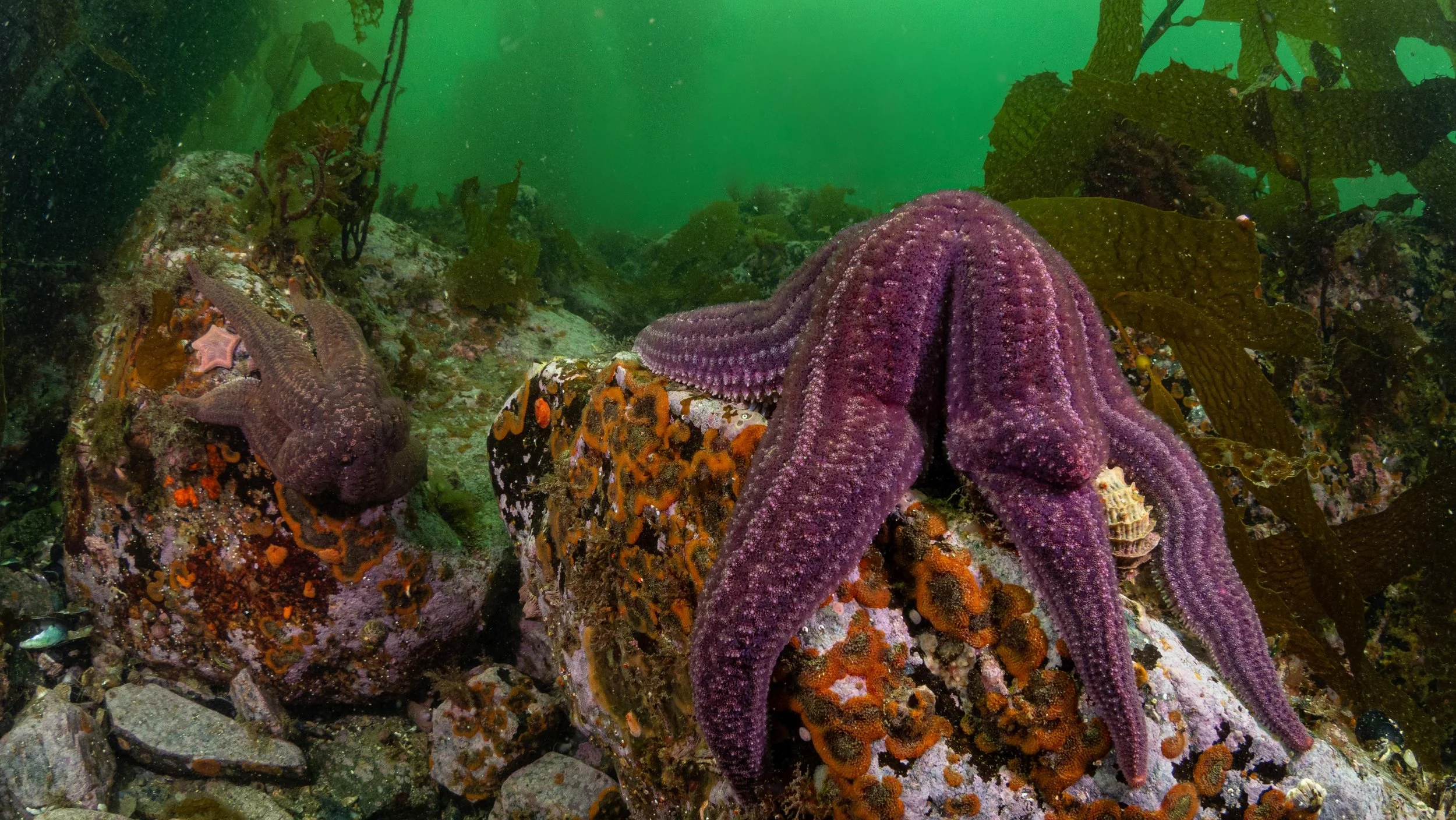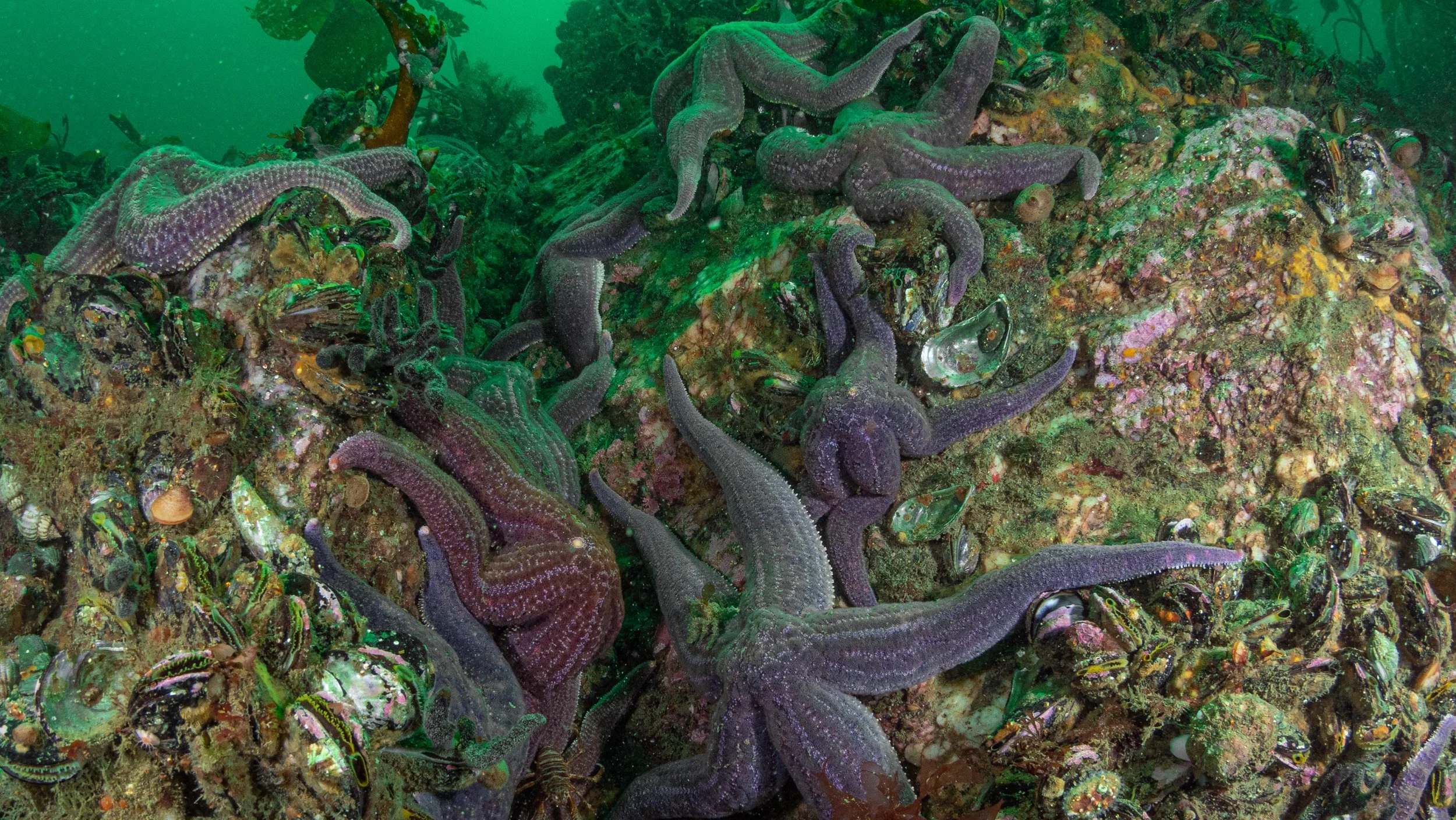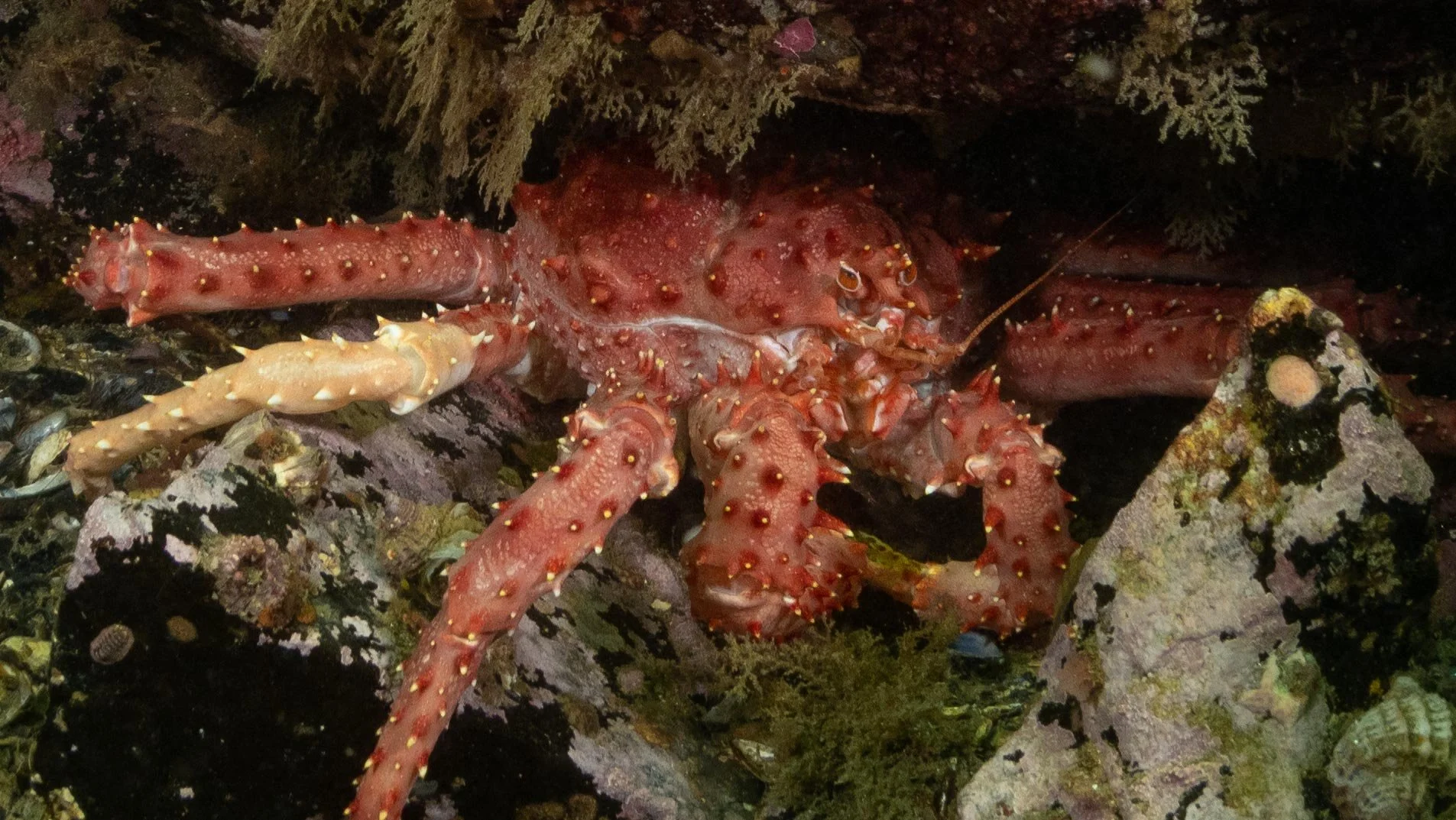
Patagonia Underwater
Patagonia is known for its rugged mountains, untamed wild places, and unparalleled beauty. Underwater is no different in this southern adventure land. While kelp forests have seen a sharp decline throughout the world, the Giant Kelp (Macrocystis pyrifera) in Patagonia has held strong and, in some areas, actually expanded. The kelp forests are home to marine life big and small. The forests offer refuge to juvenile life of several species while it is the perfect hunting ground for others. Predatory sea stars, like the Common Fjord Sea Star (Cosmasterias lurida) can be found throughout the Patagonian kelp forests to feed on the healthy populations of mollusks and bivalves. Southern king crabs, or centolla, are a delicacy in the local Patagonian restaurants and are a key fishery. Young centolla crabs (Lithodes santolla) take refuge in the kelp forests before they migrate to the ocean’s depths. These crabs rely on the protection of the kelp to grow big enough to survive in the depths. Without the kelp forests, the marine ecosystem at the tip of South America would have very limited biodiversity.
The Common Fjord Sea Star (Cosmasterias lurida) can be found throughout Patagonia in both the Atlantic and Pacific and play a key role in the kelp ecosystems. This one is in the middle of a meal on some unsuspecting mollusk.
The Common Fjord Sea Star (Cosmasterias lurida) is one of the most abundant predators on the benthic communities in Patagonia, feeding on a variety of bivalves like these. These stars are a major factor in population control of their prey, regulating the balance of the forests.
The Southern King Crab- Centolla- (Lithodes santolla) spends its juvenile years in the shallow kelp forests in the Patagonian fjords.
As a juvenile, Centolla (Lithodes santolla) clings to kelp fronds and feeds on algae while using the kelp forest to hide from possible predators until they are large enough to move to deeper water.
Just like the King Crabs in the Northern hemisphere, the Centolla (Lithodes santolla) is a sought-after delicacy for the local sea food restaurants and support a major fishery in South America. Their population depends on healthy kelp forests.





